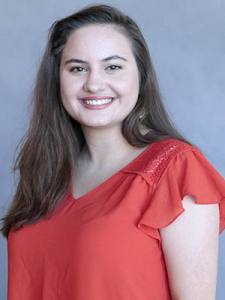The city of Friendswood voted on having a bond in November with six propositions at its Aug. 5 meeting. However, those proposition totals can be revisited at a special meeting Aug. 12.
The most contested proposition was drainage, as both a drainage subcommittee and citizens advisory team, or CAT, studied the subject and made different suggestions.
A bond attorney has advised the bond be split into six propositions—a public works facility, a public safety building, a community center/shelter, transportation, parks and drainage—for residents to vote on individually. If all propositions are passed, the bond would total almost $77 million as the propositions stand now.
The city’s last bond was in 2013, with four propositions totaling $24 million. The jump between price totals may be hard for some voters to swallow, Council Member Sally Branson said.
“This is a huge leap for the citizens of Friendswood. I think that will be shocking to our citizens,” Branson said.
The numbers discussed for the drainage proposition alone would total more than $24 million. The council voted on $41 million for the drainage proposition, higher than a proposed $34 million. This was still lower than the CAT's recommended $49.5 million.
Council Members John Scott and Steve Rockey supported a $34 million bond proposition at the meeting Aug. 5.
"I have heard people that have diminished this number who have said that we need to do more. It is $34 million. It is the largest bond we have ever done in the city," Rockey said. "We have paid our money to these people to fix this creek. They are responsible, and they will come. ... If we pass it, we're putting a lot of debt on our citizens."
When the drainage subcommittee presented a number in April, the subcommittee estimated all projects would take roughly $173 million to complete, with Friendswood contributing roughly $32 million. The $32 million would help pay for terracing along the creek, de-snagging the creek and raising bridges in the city. Meanwhile, the CAT, which was released from meeting earlier this summer, suggested $49.5 million for the city’s portion.
While the CAT removed some of the projects, such as bridge raising, the higher price is explained by a larger buffer for buyouts so the city can purchase private property for drainage work, inflation and Friendswood meeting a 25% match for shared projects and a greenbelt in the creek, said Ron Lovely, a member of both the former CAT and the drainage subcommittee.
Council's recommended $41 million includes 3% inflation over the course of the project, a 25% local match and money for 60 buyouts at $500,000 a property, according to city documents. However, those numbers are predictions on the city's part, as these projects may take 15 years to get off the ground.
As the total number of drainage projects will cost more than what the city of Friendswood can pay for, both the council and the former CAT understand the need for having money to offer so the projects are more appealing to outside entities with deeper pockets, such as the state and the Army Corps of Engineers.
"The city of Friendswood is not responsible for Clear Creek. We have our own liabilities and our own responsibilities," City Manager Morad Kabiri said. "There are entities out there that we pay taxes to take care of drainage. Now, Clear Creek has had studies done on it since 1968 with no tangible projects in our area, so I do understand we have to put some of our own money up."
To entice partners, the committee has to be able to put forward as much money as possible, as waiting longer to do these projects does not help Friendswood, former CAT member and Friendswood resident Gail Lovely said.
“The longer you wait, it doesn’t get better. If we don’t finish this project in total, you don’t get any of the benefits,” she said.
Council Member Trish Hanks does not want to undershoot any project totals, especially as some projects, such as drainage, would be spread out over the next 10-15 years. Hanks was one of five council members to support the $41 million at the Aug. 5 meeting.
“The number doesn’t bother me as long as it’s a good ... and realistic number. A lot can change in 15 years—leadership at the council level, at the state level, at the federal level, bond rates, taxable value,” Hanks said.
The tax increase from the bond could be anywhere from a 5 to 10 cent increase, Kabiri said.
The bond election will be held Nov. 5.





